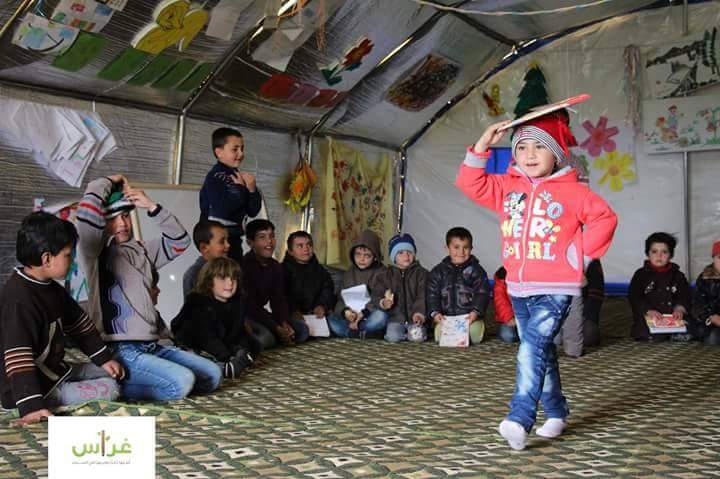Reopening Idlib’s Schools

Fuad al-Yusef wakes up filled with excitement each morning at the prospect of going to school.
Like hundreds of other children in Idlib’s countryside, the 12 year-old had missed out on education for a long time. The civil war meant that most schools in the area had been forced to close down.
But an initiative focusing on reviving the education system in the liberated areas is now giving many young people the chance to graduate from elementary school.
The Ghiras organisation, founded in June 2013, has re-launched a number of elementary schools, allowing children to go back to their studies and providing jobs for many teachers suspended by the government for revolutionary activities.
“Ghiras provides free education to students who enrol in its schools,” project director Asaad al-Omar told Damascus Bureau. “It specifically targets children who live in areas where all schools have been shut down.”
According to al-Omar, all teachers receive appropriate training for their positions, including dealing with psychological issues the children may be suffering.

Fuad is now learning several subjects including reading, maths and science. He especially likes the competitions where outstanding students can receive prizes.
“The school gave us everything we need; books, notebooks, pencils and crayons, he said enthusiastically, “And all of it was free.”
Fuad’s father told Damascus Bureau he was very grateful to Ghiras for giving children in liberated areas another chance to study.
“The free distribution of stationery has also been a great help to us. Such items are unaffordable during these difficult times,” he added.
REBUILDING THE SCHOOL SYSTEM
Ghiras was founded by a group of volunteers who initially relied on private donations to run a three-month project.
“At the beginning of the academic year 2013/14 we managed to secure funding from a number of international organisations,” al-Omar said. “This enabled us to open schools in Maarat al-Numan countryside, Ariha countryside, and Khan Sheykhun countryside. We also extended our school terms to a full academic year of seven months.”
From September 2014, teachers were funded directly by donor organisations and now receive monthly salaries of 100 US dollars. Ghiras also secured support to cover expenses such as heating, water and stationary.
The Ghiras curriculum was devised by the Ministry of Education of the Syrian Interim Government.
All grades are taught Arabic, English, maths, Islamic studies and sports and recreation. Additionally, grades three to six are taught science and social studies.
Abdo al-Deiri is the director of the Ghiras school in Maarat al-Numan. He told Damascus Bureau that student schoolbooks were provided by the educational bureau of the National Coalition of Syrian Revolution and Opposition Forces.
“Syria’s younger generation have suffered immensely from this war, therefore we must focus on their education. We are hoping to rebuild their schools and restore life back into them,” he said.
With this in mind, Ghiras recently launched a new initiative directed towards students who had missed an entire year of schooling. After a two-month intensive tuition course, these children can join a Ghiras school.
Ghiras has also teamed up with a number of relief organisations, such as Medical Relief for Syria (MRFS), with which it has opened a number of regional counselling centres for children suffering psychological trauma as a result of the war.
Another partnership with Hand in Hand for Syria has led to an extensive survey on the status of schools in Aleppo and Idlib’s liberated rural areas.
“We are gathering data and preparing to launch a number of new projects,” said Ghiras director Asaad al-Omar. “The first of these are four schools in Maarat al-Numan, whom we shall provide with logistical support.”
Hadia Mansour is the pseudonym of a Damascus Bureau contributor from Idlib, Syria.
Read the Arabic version of this article here
